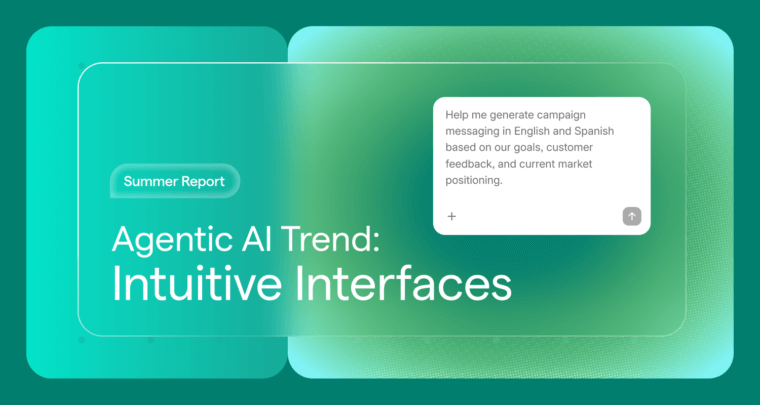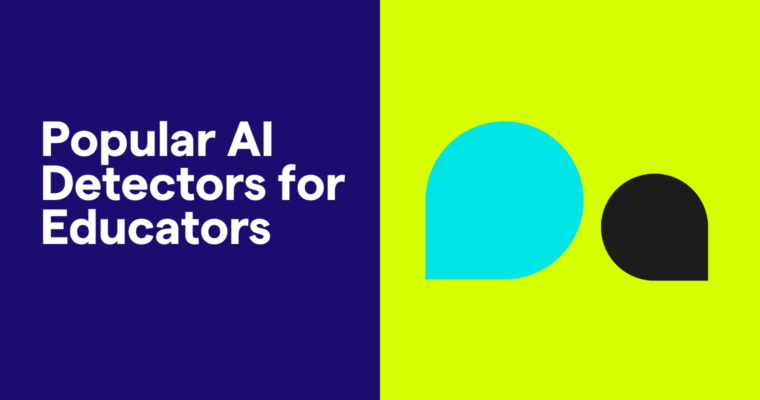
In this article, we will delve into the world of deep learning, exploring its inner workings, types, applications, and the challenges it faces. We will also discuss the future of deep learning and how it continues to shape the landscape of artificial intelligence (AI).
Table of contents
Deep learning vs. machine learning
Types of deep learning networks
What is deep learning?
Deep learning is a subset of machine learning (ML) that uses neural networks with many layers, known as deep neural networks (DNNs). These networks consist of numerous interconnected units called neurons or nodes that act as feature detectors. Each neural network has an input layer to receive data, an output layer to generate predictions, and multiple hidden layers to process the data and extract meaningful patterns.
For example, early layers might detect simple features like edges and corners in an image recognition network, while deeper layers might recognize more complex structures like faces or objects. In a language processing network, early layers might identify basic elements like individual letters or sounds, while deeper layers might understand grammar, context, or even sentiments expressed in sentences.
While early neural networks had only a few hidden layers, deep neural networks have many—sometimes over one hundred. Adding multiple hidden layers makes the network more flexible and better at learning complex patterns that generalize beyond the training data. As a result, most modern neural networks are deep neural networks.
Deep learning vs. machine learning
Deep learning and machine learning are often mentioned together but have essential differences. Simply put, deep learning is a type of machine learning. Machine learning models are a form of AI that learns patterns in data to make predictions.
Machine learning models like linear regression, random forests, k-nearest neighbors (KNNs), and support vector machines are fairly straightforward and rely on human-defined features. For example, humans provide features like square footage, number of bedrooms, and neighborhood characteristics to predict house prices. Machine learning models fine-tune the importance of these features to make predictions, but their accuracy depends on the quality of the features provided.
Deep learning models, on the other hand, do not need predefined features. They learn features independently during training, starting with random values and improving over time. This allows them to find important patterns humans might miss, leading to better predictions. They can also handle many more features than simpler machine learning models and are generally much better at handling raw data, such as images and text.
Although deep learning models are robust, simpler models can sometimes be better. Deep learning needs large datasets, and their inner workings can be hard to understand. Simpler machine learning models may be more suitable when you have less data or need to explain how the model makes its predictions.
How deep learning works
Deep learning uses deep neural networks to process and analyze data through multiple layers, producing sophisticated predictions.
1 Input layer
The process starts at the input layer, where neurons detect basic information. For example, in a language model, neurons might recognize individual letters like o or t.
2 Hidden layers
Next, the hidden layers come into play. Neurons activated in the input layer stimulate neurons in the first hidden layer, which detects more complex features, such as combinations of letters like on. The network identifies increasingly abstract features as the signal moves through additional hidden layers. The weights of the connections between neurons determine the strength of these activations.
3 Abstract feature detection
The network detects more abstract features in deeper hidden layers. This capability allows deep neural networks to handle sophisticated tasks requiring abstract reasoning, like composing text or recognizing objects in images.
4 Output layer
Finally, the network generates a prediction in the output layer. Each neuron in this layer represents a possible outcome. For example, in completing the phrase “once upon a ___,” one neuron might represent time, another dream, and a third mattress. The network estimates the probability of each outcome and selects the most likely one. Some networks, especially language models, introduce variability by choosing the most probable answer most of the time, ensuring diverse and natural outputs.
Deep neural networks learn complex patterns and features by processing inputs through multiple layers, making them powerful tools for tasks like image recognition and natural language processing (NLP).
Types of deep learning networks
Deep learning encompasses various types of neural networks, each designed to handle specific tasks. Understanding these different architectures is crucial to effectively leveraging their capabilities.
Feedforward neural networks (FNNs)
FNNs, or “vanilla” neural networks, process information in one direction: from input to output. They are ideal for simple prediction tasks like detecting credit card fraud or preapproving loans. Training occurs through backpropagation, adjusting the model based on prediction errors.
Recurrent neural networks (RNNs)
RNNs are suited for tasks requiring dynamic updates, such as language translation. They use backpropagation through time (BPTT) to account for sequences of inputs, making them effective for understanding context and relationships in sequential data.
Long short-term memory (LSTM)
LSTM networks improve on recurrent neural networks by selectively forgetting irrelevant information while retaining important details, making them practical for tasks requiring long-term context retention. Long short-term memory networks enhanced Google Translate’s capabilities but can be slow with large datasets due to their linear processing.
Convolutional neural networks (CNNs)
CNNs excel in image recognition by scanning images for visual features like edges and shapes. They preserve spatial information and can recognize objects regardless of their position in the image, making them state of the art for many image-based applications.
Generative adversarial networks (GANs)
GANs consist of a generator and a discriminator competing. The generator creates fake data, and the discriminator tries to identify it as fake. Both networks improve through backpropagation. Generative adversarial networks are excellent for generating realistic data and are useful in image recognition.
Transformers and attention
Transformers represent a breakthrough in deep learning, especially for natural language processing. They use attention mechanisms to weigh the importance of different input elements. Unlike previous models, transformers process data in parallel, enabling efficient handling of large datasets. Self-attention allows transformers to consider the relationships between all elements in an input, making them highly effective for tasks like text generation and translation.
Applications of deep learning
Deep learning models have been applied to many real-world problems, including ones that once seemed impossible for a machine to solve.
Autonomous vehicles
Autonomous vehicles rely on deep learning models to recognize traffic signals and signs, nearby cars, and pedestrians. These vehicles use sensor fusion, combining data from lidar, radar, and cameras to create a comprehensive view of the environment. Deep learning algorithms process this data in real time to make driving decisions. For example, Tesla’s Autopilot system uses neural networks to interpret the surroundings and navigate accordingly, enhancing safety and efficiency.
Large language models (LLMs) and chatbots
Deep learning models are at the core of humanlike chatbots like ChatGPT and Gemini, as well as code-writing tools like Copilot. Large language models (LLMs) are trained on vast amounts of text data, enabling them to understand and generate highly accurate human language. These models can engage in coherent conversations, answer questions, write essays, and even assist in programming by generating code snippets based on natural language descriptions. For instance, OpenAI’s GPT-4 can write code, draft emails, and provide detailed explanations on various topics.
Writing assistance
Writing tools leverage deep learning models to help you write better. These tools analyze entire sentences and paragraphs to provide suggestions for grammar, punctuation, style, and clarity. Grammarly, for example, uses advanced natural language processing techniques to understand the context of your writing and offer personalized recommendations. It can detect tone, suggest synonyms, and even help structure your writing to improve readability and engagement.
Image generation
Deep learning models such as DALL-E have recently made strides in generating novel images based on a text prompt or performing style transfers to create a new version of an existing image using the style from a third image. For instance, you can make a profile photo in the style of Vincent van Gogh’s The Starry Night (1889) by inputting a photo of yourself and a reference to the painting. These models use a combination of convolutional neural networks and generative adversarial networks to produce highly realistic and creative images.
Recommendation systems
How does your music app help you discover new artists? Deep learning models use your prior listening history to learn the patterns in your preferences and then predict new songs similar to the ones you’ve liked. These recommendation systems analyze vast amounts of user data, including listening habits, search queries, and user interactions like likes and skips. Services like Spotify and Netflix use these models to provide personalized content, making the user experience more engaging and tailored to individual tastes.
Medical diagnosis
Some language processing models can analyze information from patient records—such as test results, survey responses, notes from doctor visits, and medical history—and surface possible causes of patients’ symptoms. For example, IBM’s Watson Health uses natural language processing to extract relevant information from unstructured medical records. Similarly, image recognition models can read radiology reports to help radiologists detect abnormal results. Deep learning models are used to identify patterns in medical images, such as X-rays and MRIs, aiding in the early detection of conditions like cancer and neurological disorders.
Challenges and limitations of deep learning
Despite their power, deep learning models are flexible and come with real costs. Here are some challenges of using deep learning:
- Data requirements: Deep learning models require a lot of data to train them well. For example, OpenAI’s GPT-3 model was trained on five datasets, the smallest of which contained all Wikipedia articles.
- Computational costs: Training and running deep learning models are highly computationally intensive and energy and cost-intensive.
- Bias: Models trained on biased data will inherit and incorporate that bias into their responses. For example, training an image recognition model on 90% images of dogs and 10% images of cats won’t prepare the model well if 50% of real-world images include cats.
- Interpretability: The “hidden layers” that make up most of a deep learning model are aptly named because it can be challenging to know what they’re doing to make their predictions. In some cases, that may be fine. In others, it’s essential to know what went into the prediction. For example, understanding how a model predicted patient outcomes in response to a new treatment is scientifically and medically necessary.
- Fake images and misinformation: Generative adversarial networks like DeepDream can produce fake but convincing images. In the wrong hands, these could be used to spread misinformation. Similarly, chatbots like ChatGPT can “hallucinate” incorrect information and should always be fact-checked.
The future of deep learning
While it’s hard to know what the future will bring for deep learning, here are a few areas of active development:
- Large language models are continuing to improve: Organizations like OpenAI continue to build off of past successes, and you should expect to see their models’ responses getting better and more accurate.
- Multimodal learning: Some cutting-edge deep learning models are trained multimodally to generalize across different types of information; for example, a model trained on text could predict information about speech or images.
- Interpretability: While deep learning models remain relatively opaque, we may see more tools in the future that make it easier to understand how they arrive at their predictions.
Conclusion
Deep learning is a powerful tool with the potential to tackle many of the problems we face today, whether that’s detecting a bear on a wildlife camera, discovering new treatments for diseases, or writing more clearly.






